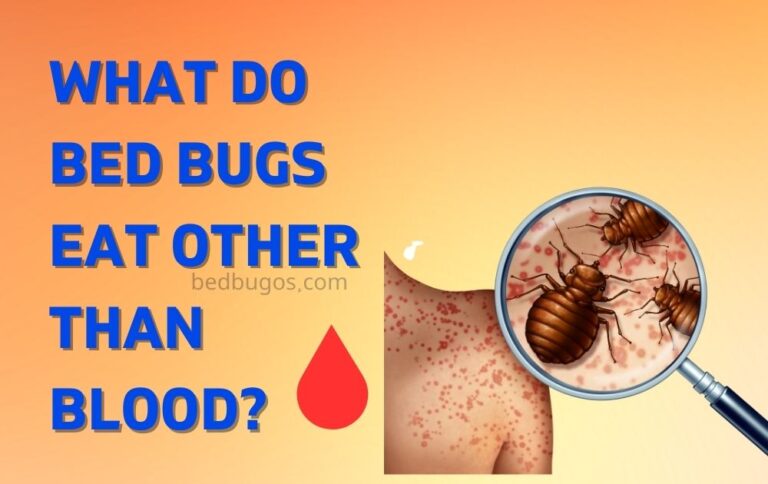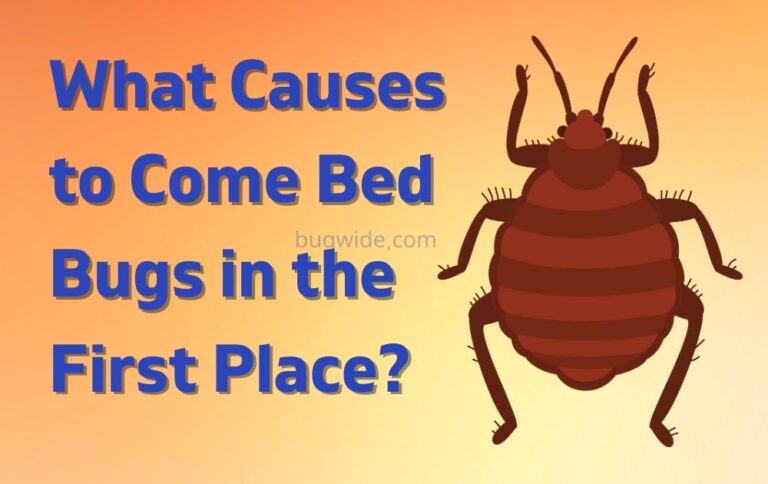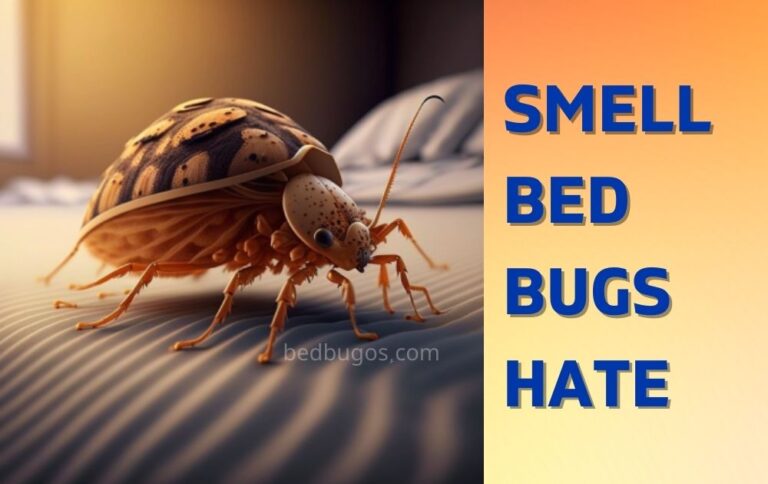Can Bed Bugs Live in Vacuum Sealed Bags? Here’s What You Need to Know

how long can bed bugs live in a vacuum sealed bag? This question might have crossed your mind if you’ve ever dealt with a bed bug infestation. These pesky insects can invade your home and make your life miserable, so it’s natural to wonder if vacuum-sealing your belongings can keep them at bay. In this article, we’ll explore this question in-depth and provide you with the answer you need to protect yourself from these bloodsuckers.
The short answer is no, bed bugs cannot survive in vacuum-sealed bags. The reason is simple: Bed bugs need air to survive, and vacuum sealing removes all the air from the bag. Without air, bed bugs will eventually die due to suffocation. However, there are some caveats to this answer that we’ll discuss in detail later in the article.
But how can you be sure that vacuum sealing is an effective way to eliminate bed bugs? We’ll delve into the science behind it and provide you with data and research from subject matter experts. We’ll also give you some tips on how to properly vacuum seal your belongings to ensure that bed bugs don’t stand a chance.
So, if you’re tired of dealing with bed bugs and want to take matters into your own hands, keep reading to learn everything you need to know about vacuum sealing and bed bugs.
Can Bed Bugs Live in Vacuum Sealed Bags?
The short answer is no, bed bugs cannot survive in vacuum-sealed bags. Vacuum sealing removes air and moisture from the bag, creating an environment that is unsuitable for bed bugs. Without air and moisture, bed bugs will eventually die from dehydration.
However, it’s important to note that vacuum sealing alone may not be enough to completely eliminate bed bugs. If there are bed bugs on the items you are vacuum sealing, it’s important to first eliminate them through other methods such as heat treatment, steam cleaning, or insecticide treatment before vacuum sealing.
How to Properly Use Vacuum Sealing to Get Rid of Bed Bugs?
To effectively use vacuum sealing to get rid of bed bugs, follow these steps:
- Inspect items for bed bugs: Before vacuum sealing, thoroughly inspect the items for any signs of bed bugs. Look for live bed bugs, shed skins, or blood stains.
- Eliminate bed bugs: If you find any signs of bed bugs, it’s important to first eliminate them through other methods such as heat treatment, steam cleaning, or insecticide treatment.
- Vacuum seal items: Once you’ve eliminated the bed bugs, place the items in vacuum-sealed bags and use a vacuum sealer to remove air and moisture from the bag. Be sure to follow the manufacturer’s instructions for proper use.
- Dispose of bags properly: After vacuum sealing, dispose of the bags properly to prevent bed bugs from escaping. Seal the bags in another plastic bag and dispose of them in an outdoor trash container.
Pros and cons of vacuum-sealed bags:
| Pros | Cons |
|---|---|
| Can effectively contain bed bugs | May not kill all bed bugs |
| Easy to use and transport | Limited space for larger items |
| Can prevent bed bugs from escaping | Bed bugs can survive for long periods without feeding |
| Can be used for long-term storage | Some bags may not be specifically designed for bed bug control |
| Affordable | The bag may need to be replaced if damaged or compromised |
Types of vacuum-sealed bags:
When it comes to vacuum-sealed bags for bed bug control, there are several different types available on the market. The most common types include:
- Standard Vacuum Sealed Bags: These bags are designed to be used with a vacuum cleaner or other suction device to remove air and create a seal. They are made of a durable, tear-resistant material that can withstand the suction process.
- Zippered Vacuum Sealed Bags: These bags feature a zippered closure that allows for easy access to the contents while still providing a tight seal. They are often used for storing clothing and other soft items and can be especially useful for preventing bed bugs from infesting clothing during travel.
- Heat-Sealed Vacuum Sealed Bags: These bags are designed to be sealed using heat, rather than suction. They are often used for storing food and other perishable items, but can also be used for bed bug control. They are typically made of a thicker, more durable material than standard vacuum-sealed bags.
- Heavy-Duty Vacuum Sealed Bags: These bags are designed for use in more rugged environments, and are typically made of a thicker, more durable material than standard bags. They can withstand more wear and tear, making them a good choice for storing items in garages, basements, and other areas where pests may be more prevalent.
When selecting a vacuum-sealed bag for bed bug control, it is important to choose a bag that is durable and tear-resistant, and that provides a tight seal to prevent bed bugs from entering or escaping. It is also important to follow the manufacturer’s instructions for use and to dispose of bags properly after use to prevent the spread of bed bugs or other pests.
Other Bed Bug Prevention Methods:
In addition to vacuum-sealed bags, there are a variety of other bed bug prevention methods available.
Bed Bug Encasements:
One popular option is to use bed bug encasements for mattresses and furniture. These encasements are designed to create a physical barrier between the bugs and the person using the furniture, preventing them from feeding and reproducing. They can also make it easier to detect bed bugs if they are present, as the bugs will be trapped inside the encasement.
Heat Treatment:
Heat treatment is another effective option for controlling bed bugs. This involves using room heaters to raise the temperature of a room or item to a level that is lethal to bed bugs. This can be done in a variety of ways, including steam treatments, heat chambers, and portable heaters. Heat treatment can be highly effective, but it can also be costly and time-consuming.
Chemical Treatments:
Chemical treatments are another option for bed bug control, but they should be used with caution. Many over-the-counter sprays and foggers may not be effective against bed bugs, and can even make the problem worse by driving the bugs deeper into hiding or causing them to spread to other areas. Professional pest control companies can provide more effective chemical treatments, but they may be expensive and can pose health risks if not used properly.
Integrated Pest Management :
Integrated pest management (IPM) is a comprehensive approach to bed bug control that involves a combination of methods, including regular inspections, cleaning, and treatment as needed. This approach focuses on preventing infestations from occurring in the first place, rather than just treating the problem once it has already taken hold. By using a combination of methods and focusing on prevention, IPM can be highly effective in controlling bed bugs and other pests.
A combination of methods may be necessary for the best results, and it is important to work with a qualified pest control professional to develop a customized plan of action. By taking proactive steps to prevent bed bugs, and by acting quickly if an infestation does occur, it is possible to minimize the impact of these pests and maintain a comfortable living environment.
FAQ’s
Bed bugs can survive for several months without feeding, but they require a regular blood meal to survive and reproduce. When they are trapped inside a vacuum-sealed bag, they can survive for only a short period of time, typically a few days to a week or two, depending on the temperature and humidity inside the bag. The lack of oxygen and the extreme conditions inside the vacuum-sealed bag will eventually lead to their death.
Vacuum-sealed bags can be an effective way to protect your belongings from bed bugs, but it depends on the type of bag and how well it is sealed. If the vacuum-sealed bag is made of a durable material and sealed tightly, it can prevent bed bugs from accessing your items, including clothes, bedding, and other personal belongings. However, if the vacuum-sealed bag is damaged or not sealed properly, bed bugs can still get inside and infest your belongings.
It is possible for a new vacuum-sealed mattress to have bed bugs, as bed bugs can easily hitch a ride on furniture and other belongings during transportation or storage. However, the likelihood of this happening is relatively low, especially if the mattress is purchased from a reputable retailer or manufacturer. To minimize the risk of bed bugs, it is recommended to inspect the mattress thoroughly before purchasing and to use a mattress encasement to prevent any potential bed bug infestations.
Conclusion:
Vacuum sealing can be an effective method for eliminating bed bugs, but it’s important to first eliminate any bed bugs on the items through other methods such as heat treatment, steam cleaning, or insecticide treatment. Once the bed bugs have been eliminated, vacuum sealing can help prevent future infestations by creating an environment that is unsuitable for bed bugs.
Remember to always properly dispose of vacuum-sealed bags to prevent bed bugs from escaping. With these tips, you can effectively use vacuum sealing to get rid of bed bugs and keep your home bed bug-free.



![What Scent Do Bed Bugs Hate? [5 Best Scents]](https://lyssfits.com/wp-content/uploads/2023/02/What-Scents-Do-Bed-Bugs-Hate-768x484.jpg)


![How Long Can a Bed Bug Live Without Food? [Tolerance]](https://lyssfits.com/wp-content/uploads/2022/12/How-Long-Can-a-Bed-Bug-Live-Without-Food-Answered-768x484.jpg)